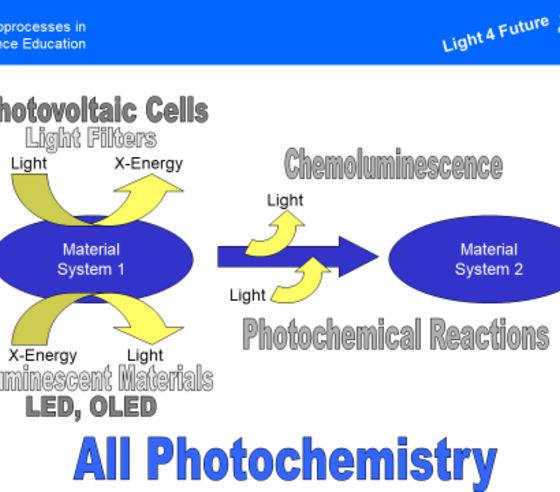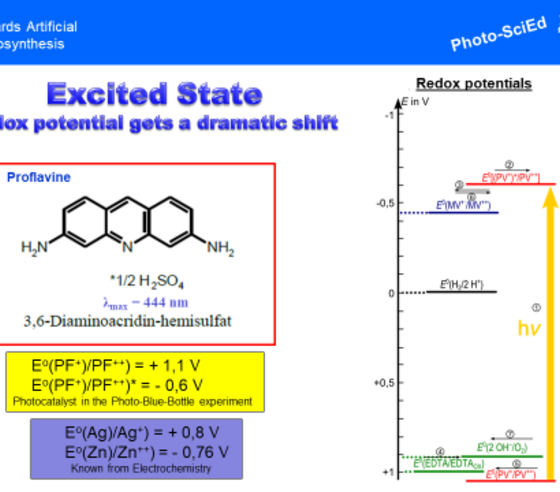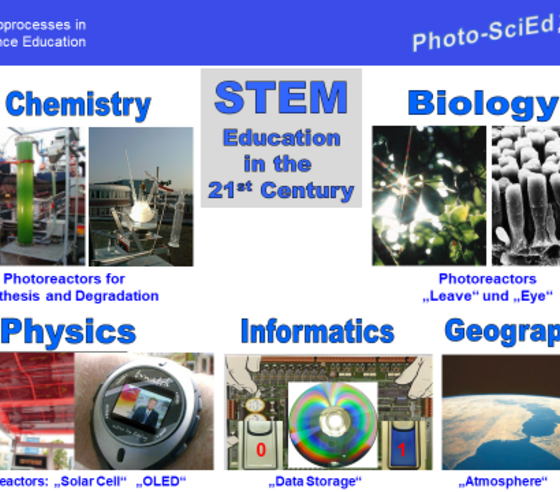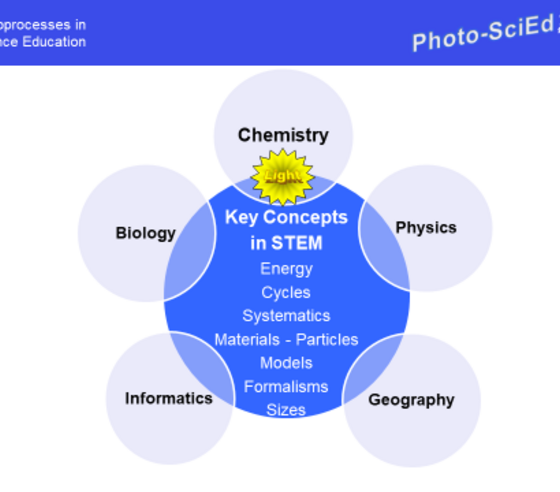4. Processes involving light—cross-section of STEM disciplines
When it comes to the conversion of mechanical energy into electrical energy and vice versa (dynamo or electric motor) or of thematic energy into electrical energy and vice versa (thermocouple or heating resistor), there is a traditional and established allocation of teaching/learning content to physics lessons. None of these energy conversions involve any conversion of substances, no chemical reactions occurs.
In contrast, energy conversions from chemical to electrical energy and vice versa (galvanic cells, batteries, accumulators, fuel cells or electrolysis and galvanization) are dealt with in chemistry lessons. Material conversions also take place here. The dividing line between physics and chemistry is therefore very clear and concise: energy conversions without material conversions belong in physics, while energy conversions with material conversions belong in chemistry.


A very similar separation between physics and chemistry could also be drawn and allocated to energy conversions involving light. According to this, chemiluminescence and photochemical reactions belong in chemistry, while photovoltaic cells, LEDs and OLEDs belong in physics. At first look, this appears to be “all photochemistry”.
However, it needs to be properly explained and presented in a didactically understandable way. On deeper insight, chemistry takes place in all photoprocesses, because new chemical species with completely new properties are generated everywhere in the form of excited states A*, even if this only happens transitionally and for a very short time.


For instance, the redox properties of excited states A* can differ dramatically from those of the ground states. This makes them functional dyes that can be used as photocatalysts and as photoactive materials in solar cells, LEDs and OLEDs.
In physical functional units such as solar cells and light-emitting diodes, processes take place in which electronically excited states A* are involved in A → A* → A cycles. In this cases chemical conversions of the light-active species would be harmful. They would disrupt the desired function of the component (conversion of light into electrical energy or electrical energy into light) and the function would be completely inhibited after a short time.
In biological functional units such as leaves, skin and eyes, light-driven chemical reactions of very different kinds may occur (reductions, oxidations, isomerisations, etc.). However, there are also photoprocesses in organisms, in which the particles of certain light-active substances, e.g. photosensitisers and photocatalysts, initially act as light antennas by absorbing photons into excited states A*, in order to be reformed again after an energy or electron transfer to particles of other substances, i.e. not to be consumed. Cycles of the type A → A* → A are also taking place here.


In computer science, photoprocesses play a decisive role in logical switches in optoelectronic components. In geography, in they play a decisive role in light-driven and vital reactions in the photoreactor atmosphere.
All macroscopically observable phenomena in the interaction of light with substances can be explained by elementary processes at the particle level in the interaction of photons with molecules or other combinations of atoms. Therefore, the specific content of each individual STEM discipline can be explored using particular facets of the key concept of light. Chemistry has a pioneering role among the STEM subjects in the exploration of photoprocesses. However, in the context of processes involving light, there is a rich intersection of contents in several disciplines. The debate about the priority of subject-specificity or cross-disciplinarity in the STEM subjects therefore has a simple, practicable and forward-looking solution. It is: “subject-specificity and cross-disciplinarity with light”.
